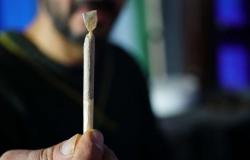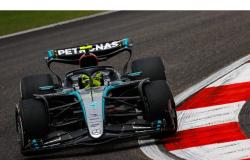While in the past the grid of Formula 1 it was full of paint jobs that really stood out, the last era of ground effect technical regulations meant that teams reduced the amount of paint applied to the bodywork as much as possible. Was the goal to leave all that carbon fiber bare? Save critical weight on cars that are already excessively heavy overall.
This trend shows no signs of abating, as the start of the 2024 season demonstrated. Alpine A524 is particularly black – excessively so, some would say – to the point of provoking discussion about whether or not F1 management should step in and do something about it. However, it’s fun to note that one of the most talked about stories before the season started concerned the green paint job on the Stakingdespite the fact that the car is one of the ones with the most carbon black!
Should, for example, introduce a rule that requires teams to paint their entire car to ensure the grid is full of beautiful painted machines? It might seem like a good idea on paper. But, as always in F1, the devil is in the details and it would be very difficult to come up with a rule that would force teams to paint their cars.
Esteban Ocon, Alpine A524
Difficult to regulate
The first and obvious problem is simple: F1 cars are not standardized in terms of aerodynamics. This means that there cannot be a de facto standardization of the areas to be painted.
One of the greatest painting experts in the category believes that it is difficult to imagine such a measure, as he understands that regulation in this area would lead to endless complications. Mark Turner helped found Silverstone Paint Technology in 2008. The company now works with most F1 teams, although it cannot specify which teams it works with.
When asked by Motorsport.com whether a change to the rules is the right way to solve the paint problem in F1, Mark Turner said: “I don’t know how to change the rules. I don’t know how to easily regulate that aspect, because obviously the surface and the choice of paint design, [como] where it is painted and where it is not painted, if regulated to a minimum, could make it difficult to standardize painting on all cars.”
The reason is simple: each team has different designs and therefore different surfaces on their cars. This is particularly true at a time when sidepods and air intake/cooling zones are evolving significantly.
Valtteri Bottas, Kick Sauber C44
Photo by: Andy Hone / Motorsport Images
Towards the end of paint schemes?
Forcing teams to paint their cars may not be an option, but that doesn’t mean F1 is now stuck in a world where carbon-dominated paint jobs are here to stay. Turner is convinced that this is just a problem with the current generation of cars and that it should disappear on its own when the category switches to smaller machines from 2026.
In his opinion, it is important to understand that the paint problem is not just due to the fact that teams are struggling to get closer to the imposed minimum weight limit. It’s also because, as F1 cars have become so much bigger, painting them requires a lot more paint, which is starting to become a real performance factor.
“Paint mass was always on the agenda, but it was never a priority,” says Turner. “Interestingly, I think this probably evolved over time because the size of cars has increased dramatically.”
“The surface area is much larger than it was in the early 2000s when there were naturally aspirated engines. So the surface area has a direct effect on the overall paint cost. We can’t speak to any particular team, but probably three years ago we had some of the heaviest paintings, with about three kilos of paint and sponsors.”
If we consider that 10 kg equates to around three-tenths of a second per lap, the total mass of paint on an F1 car can influence its performance by almost a tenth per lap, or five to seven seconds in a race.

Carlos Sainz, Ferrari SF-24
Photo by: Zak Mauger / Motorsport Images
The business advantage of remaining clearly identifiable
Since this aspect became a real concern for teams, paint technology has evolved considerably (as has that of drivers’ suits, for example) and the weight of a complete livery has been reduced to just over a kilo. While F1’s plans for 2026 include lighter cars, which could help solve the problem, Turner believes that further progress and closer relationships with the teams will bring back the glorious liveries we have seen in the past.
“I think, at the end of the day, there will be innovation,” he believes. “Sometimes it’s about working with the engineering teams to understand where there is potential for development. There is something of a technical advantage if you can innovate in paint and coatings to produce a lighter overall finish that the commercial team be satisfied.”
“That’s what F1 is all about: innovating and pushing the boundaries. Sometimes it’s good to be rewarded for innovation rather than being standardized. So it’s about pressure and attractiveness. But again, if we want to have liveries iconic colors that fans can identify and recognize in a race, that’s important. I think there will also be marginal gains as we work more closely with the technical design team and the commercial design team. And that will ultimately bring back some colors. “










